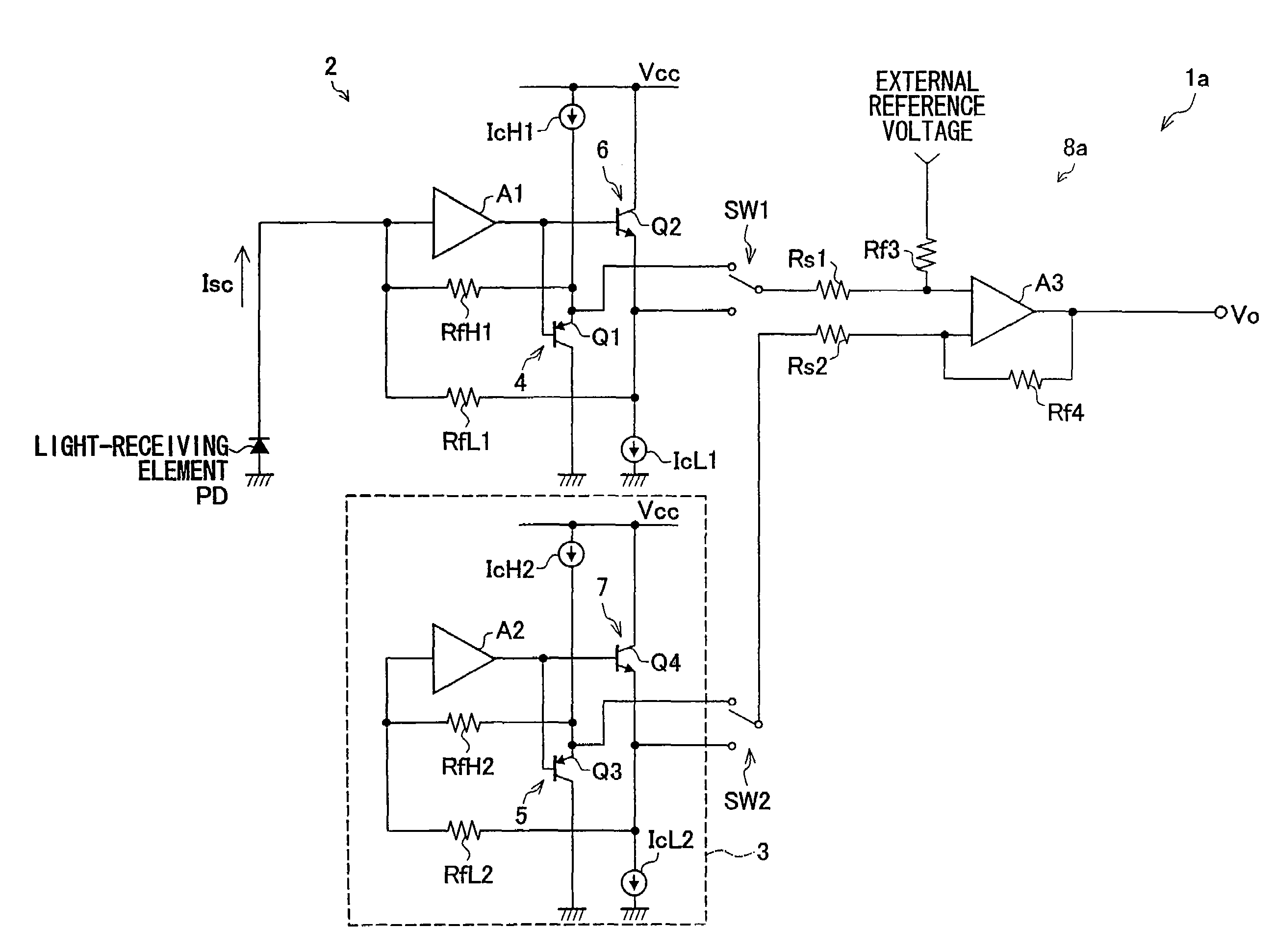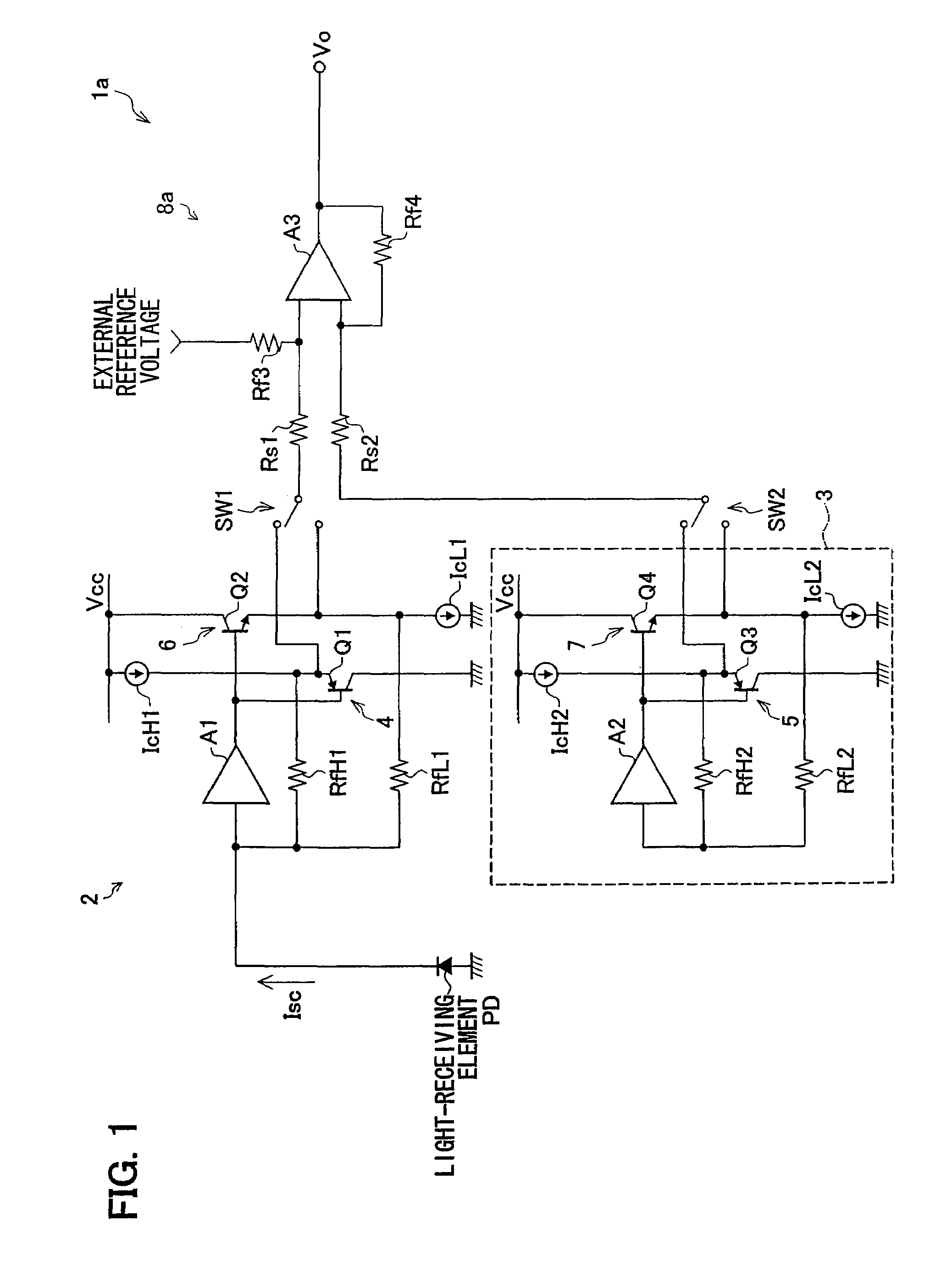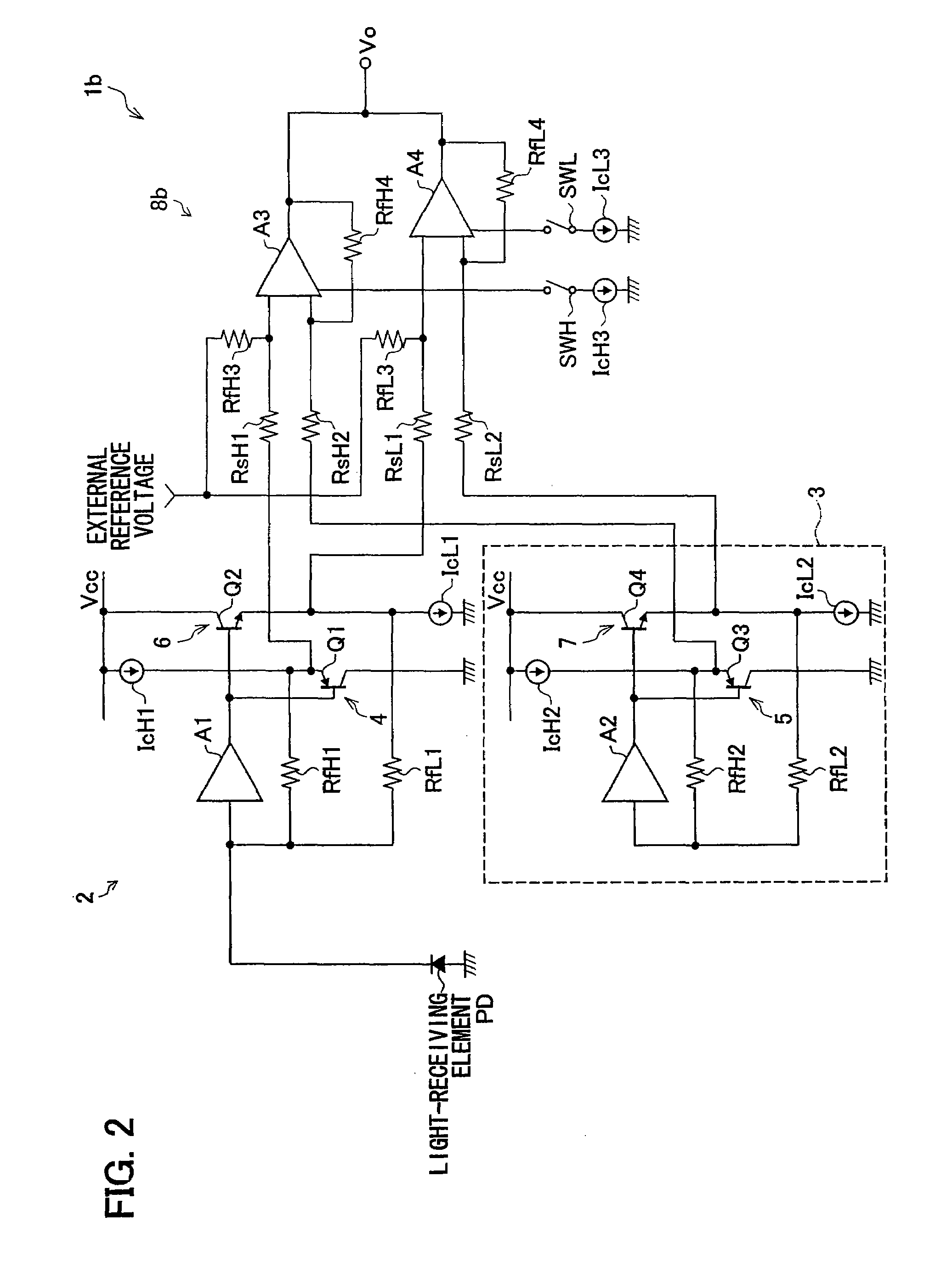Light-receiving amplifier and optical pickup device
a pickup device and amplifier circuit technology, applied in the direction of gain control, record information storage, instruments, etc., can solve the problems of small output voltage range (dynamic range) extreme poor s/n ratio of output signals of the light-receiving amplifier circuit, etc., to avoid narrowing down of the output voltage range, reduce heat noise, and prevent deterioration of the s/n ratio
- Summary
- Abstract
- Description
- Claims
- Application Information
AI Technical Summary
Benefits of technology
Problems solved by technology
Method used
Image
Examples
embodiment 1
[0042]FIG. 1 is a circuit diagram illustrating a configuration of a light-receiving amplifier circuit 1a of Embodiment 1. The light-receiving amplifier circuit 1a is provided with a preamplifier circuit 2 including an amplifier A1. To an input terminal of this amplifier A1 connected is one end of a light-receiving element PD whose another end is grounded. The amplifier A1 includes feedback resistors RfH1 and RfL1 for use in current-voltage conversion, each of which resistors provided so that feedback resistors RfH91 and RfL91 and the amplifier A91 are connected in parallel to one another. One end of each of the feedback resistors RfH1 and RfL1 is commonly connected to the input terminal of the amplifier A1.
[0043]The preamplifier circuit 2 is further provided with an emitter follower circuit (output voltage expanding circuit) 4 which includes a PNP transistor Q1 and a constant current source IcH1. The gate of the PNP transistor Q1 is connected to an output terminal of the amplifier A...
embodiment 2
[0064]FIG. 2 is a circuit diagram illustrating a configuration of a light-receiving amplifier circuit 1b of Embodiment 2. The same symbols are given to members which are identical to those of the foregoing configuration, and detailed explanation for these members are omitted. The same goes for the rest of the embodiments.
[0065]The light-receiving amplifier circuit 1b is provided with a differential amplifier circuit 8b which includes two differential amplifiers (first and second differential amplifiers) A3 and A4 connected in parallel to each other. One of the input terminals (first input terminal) of the differential amplifier A3 is connected, via a resistor RsH1, to a connection point between a PNP transistor Q1 and a constant current source IcH1 of a preamplifier circuit 2. Another one of the input terminals (second input terminal) of the differential amplifier A3 is connected, via a resistor RsH2, to a connection point between a PNP transistor Q3 and a constant current source Ic...
embodiment 3
[0069]FIG. 3 is a circuit diagram illustrating a configuration of a light-receiving amplifier circuit 1c of Embodiment 3. The light-receiving amplifier circuit 1c is an example where a grounded amplifier is used as an amplifier of a preamplifier circuit.
[0070]The light-receiving amplifier circuit 1c is provided with a preamplifier circuit 2c. The preamplifier circuit 2c has an NPN transistor Q5. The base of the NPN transistor Q5 is connected to: (i) a light-receiving element PD; (ii) one end of a feedback resistor RfH1; and (iii) one end of a feedback resistor RfL1. The collector of the NPN transistor Q5 is connected to: (i) the bases of a PNP transistor Q1 and an NPN transistor Q2; and (ii) one end of a constant current source Ic1 whose another end is connected to a line through which a power source voltage Vcc is supplied. The emitter of the NPN transistor Q5 is grounded.
[0071]The light-receiving amplifier circuit 1c further includes a preamplifier circuit 3c which includes an NPN...
PUM
| Property | Measurement | Unit |
|---|---|---|
| output voltage | aaaaa | aaaaa |
| voltage | aaaaa | aaaaa |
| resistance | aaaaa | aaaaa |
Abstract
Description
Claims
Application Information
 Login to View More
Login to View More - R&D
- Intellectual Property
- Life Sciences
- Materials
- Tech Scout
- Unparalleled Data Quality
- Higher Quality Content
- 60% Fewer Hallucinations
Browse by: Latest US Patents, China's latest patents, Technical Efficacy Thesaurus, Application Domain, Technology Topic, Popular Technical Reports.
© 2025 PatSnap. All rights reserved.Legal|Privacy policy|Modern Slavery Act Transparency Statement|Sitemap|About US| Contact US: help@patsnap.com



